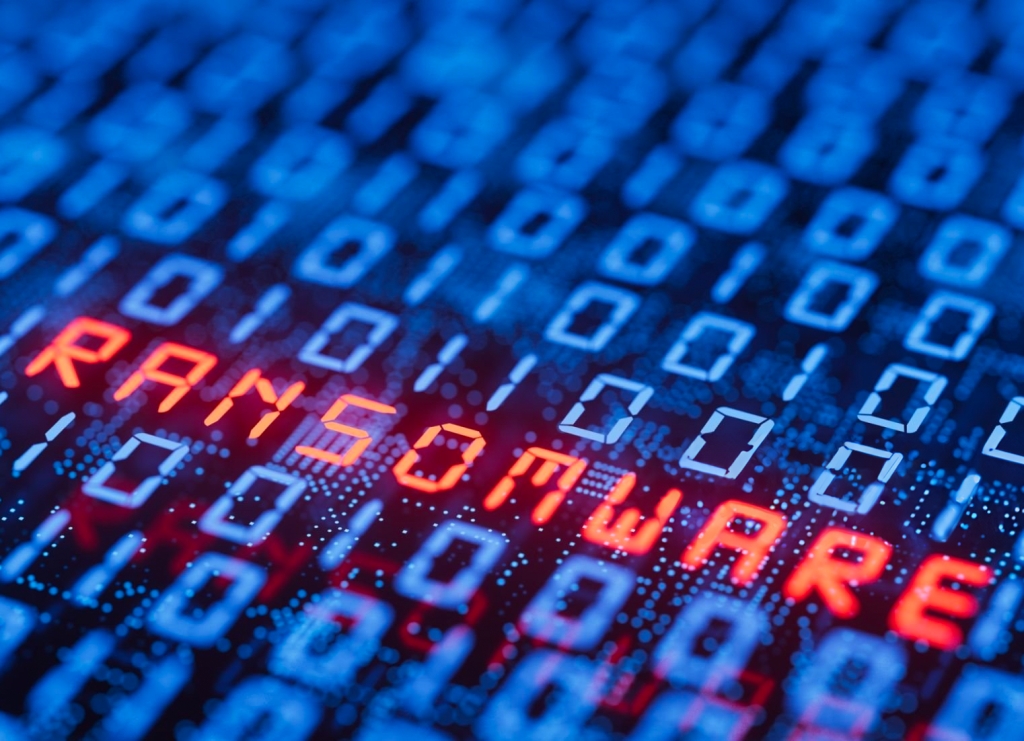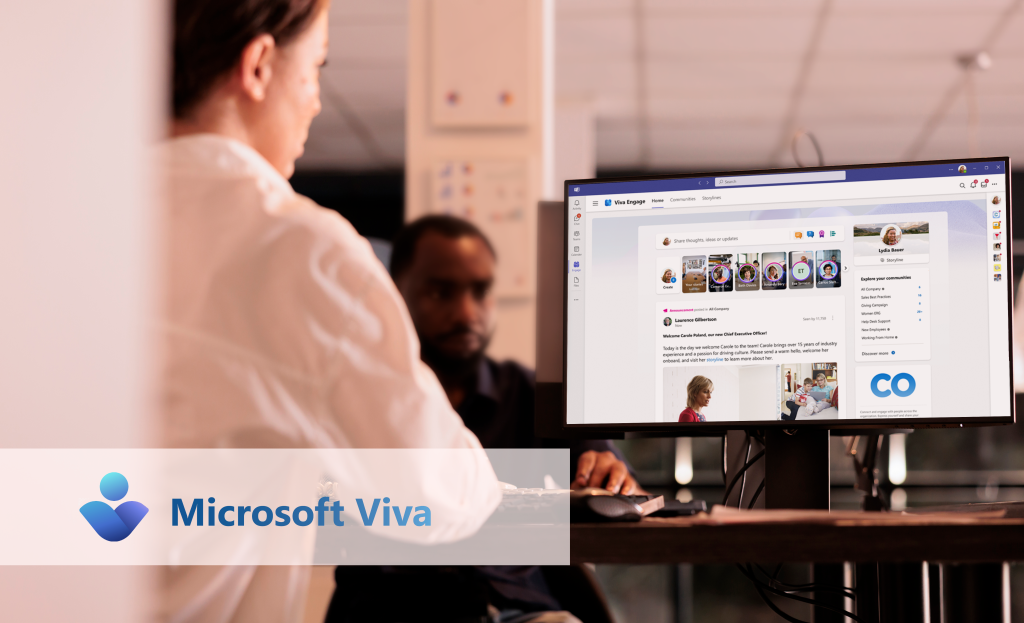Ransomware: 8 Ransomware Protection Tips for Organizations
Patrick Côté
Director of IT Managed Services

Ransomware attacks are one of the main cybercrimes facing organizations. This is even more true since the pandemic, as this global event has transformed the working environment, making it more vulnerable to certain computer attacks.
So, how can you protect yourself from ransomware effectively to avoid the worst? Find out all about the different types of ransomware, the importance of building a robust information security and cybersecurity plan, and ways to protect your business from cyberattacks.
Cybersecurity 101: What Is Ransomware?
Ransomware is malicious software distributed by a hacker or group of hackers, either in a targeted or opportunistic manner. According to the Canadian Cyber Security Centre, there are many types of cybersecurity attacks, but ransomware is at the very top of the list.
What Is the Main Objective of a Ransomware Attack?
The primary objective of a ransomware threat is to extort money from organizations in exchange for a promise to recover your important data or unlock blocked systems. Some of these threats are simply intended to damage a company’s image by corrupting its information system and causing it to suffer operating losses.
Unfortunately, even if the organization decides to pay the ransom, there’s still a risk that the cybercriminals won’t provide a decryption key to recover the encrypted personal data.
Identifying Ransomware
There are different types of ransomware, but here are the most common cyberattacks:
- Blocker: This type of ransomware is also known as a disk blocker. It can restrict access to the device’s screen by encrypting the disk and blocking basic terminal functionality. Thus, The user can no longer gain access to the operating system to try to remedy the situation.
- PIN blocker: Similar to the blocker, this type of cyberattack mainly targets mobile devices (Android or IOS). This password cyberattack modifies access codes and locks users out of the system.
- Encrypting ransomware: The most popular ransomware. This cyberattack on personal data encrypts an organization’s individual data and files.
- Scareware: Cyberattacks on terminals designed to intimidate users into purchasing and downloading unnecessary software. Users will primarily suffer pop-up bombardments that flood their screens, forcing them to pay the ransom to remove them.
- Doxware/Leakware: A computer attack that threatens the disclosure of sensitive data unless a ransom is paid.
It’s often too late to identify a threat when you fall victim to ransomware. In most cases, victims receive a ransom message on their screen or when downloading text files to infected folders. The ransomware group can also change the extension of an encrypted file.
Being vigilant and performing vulnerability scans are among the most effective methods to protect against ransomware. However, it is still possible to become a victim even when using robust security policies and ransomware protection best practices. Therefore, organizations must develop contingency plans, such as systematic data backup.
Average Cost of Cyberattacks
Every year, millions of dollars are extorted from corporations. According to an IBM study, the cost of data breaches averages $6.94 million for Canadian companies.
However, some sectors, such as finance and energy, have much higher figures. An average of 12 million per attack is recorded for the financial sector and 9.37 million for energy.

Why Preventing Ransomware Attacks Is Crucial for Organizations?
Small, medium, large, government, hospital—no organization is exempt. The most vulnerable are those who depend on instant access to funds or records. However, criminals also target easy marks, such as small businesses with gaps in cloud cybersecurity or training to prevent threats.
Paying the ransom does not mean you’ll get your data back. What’s more, you’re encouraging the criminal to continue his activities. Protection and prevention are therefore essential to avoid the consequences of a ransomware infection.
- Reduced productivity (downtime to repair or restore)
- Financial losses (loss of income due to downtime and restoration expenses, calling in experts, fines if personal data is disclosed, legal proceedings, etc.).
- Data loss
- Damage to your reputation
- Firing security managers (CISOs) and employees to reduce financial losses and operational costs
- Impact on compliance with data protection regulations such as Law 25
What to Do in the Event of a Ransomware Attack?
Here are our recommendations if your organization falls victim to a ransomware incident:
- Isolate the device from the network and cloud and disconnect it from the Internet connection
- If you have an IT managed service provider, contact them immediately so that they can intervene as quickly as possible.
- Do not pay the ransom
- Keep proof of your attack (phishing emails, firewall event logs, encrypted files, physical copy of server(s) or, alternatively, hard disks).
- Report the incident to the law enforcement agency in charge of cybersecurity
How to Prevent and Fight Ransomware: 8 Best Cyberdefense Strategies and Best Practices
1. Educate, Train and Raise Awareness of Cybersecurity Best Practices among Your Employees
Don’t make the mistake of not investing in training and awareness campaigns. The best ransomware protection for business is always education. Keep your teams informed about phishing and how to deal with messages from unknown senders containing attachments or links to suspicious sites.
3. Backing Up Your Data Systematically
One of the best ways to reduce your risk is to back up your data systematically. This way, you can recover your data and restore your system to its original state without paying any ransom in the event of an attack.
5. Choose Complex Passwords and Strengthen User Authentication
To ensure the security of your passwords, we recommend using complex codes with numbers and symbols and of a good length. Our experts also recommend changing your passwords regularly. Passwords created by default must also be erased if they are not changed immediately.
When it comes to authentication, the best ransomware prevention methods are as follows:
- Use a user account rather than an administrator account
- 2-step verification (2FA: two-factor authentication)
- Monitoring access and activities
7. Anti-Ransomware Solutions
Regarding IT security best practices, there are several anti-ransomware solutions. These include using reliable, multilayered security software, real-time protection and detection tools, and elaborating a contingency plan in the event of an attack.
Using VPN services on public Wi-Fi networks is another option if your organization doesn’t have a reliable SASE solution. A SASE service includes all the elements you need to maintain an exemplary security posture:
- Secure Service Edge (SSE)
- Software-Defined Wide Area Network (SD-WAN)
- Secure Web Gateway (SWG)
- Cloud Access Security Broker (CASB)
- Firewall as a Service (FWaaS)
- The principle of least privilege (Zero Trust Network Access)
If you haven’t already done so, consider migrating your data and systems to cloud technologies and services. One of the main advantages of cloud vs. local systems is that architecture vulnerabilities are much harder to exploit.
For instance, cloud hosting solutions allow you to restore older versions of your files through automatic backups. This means that if a cybercriminal encrypts your files, you might be able to retrieve your unencrypted data from your cloud storage.
2. Identifying an Information Systems Security Officer (ISSO)
Identify a person responsible for the cybersecurity department within your company. This person will be responsible for ensuring that security tools are updated on a regular basis, will be in charge of awareness campaigns among the various teams, and will become your cybersecurity expert.
Another option is to use a managed security service to provide continuous monitoring of your information systems and detect and respond to intrusions more quickly.
4. Apply Patches and Updates
Are your antivirus and firewall software notifying you of an update? Don’t wait to apply patches. Updating your security systems regularly is a good cybersecurity practice to maintain.
6. Reducing the Attack Surface
The vast majority of ransomware attacks begin in:
- Phishing emails
- Unpatched vulnerabilities
- Remote access solutions
- Mobile malware
With more and more people working from home, remote working and cybersecurity are now closely linked. It is, therefore, crucial to establish robust IT security practices that are as strong on-site as they are remotely.
For phishing emails, we recommend changing the default macro setting. Disable all macros without notification in Office applications that support macros. Macro is the most common malicious attachment used by hackers.
Unless you routinely use macros in your work, receiving legitimate files with a macro is unlikely. However, if this is customary for your organization, we recommend disabling all macros except digitally signed ones.
8. Some Additional Safety Tips
- Power off devices not in use
- Never disclose personal information
- Do not use an unknown USB key
Why Has the Number of Ransomware Attacks Increased?
Modern organizations have been facing many challenges in recent years, some of them reinforced by the pandemic. With the work environment increasingly moving towards flexible models (remote and in-office) also comes a wider attack surface.
This creates vulnerabilities in cyberdefenses that cybercriminals exploit to spread ransomware.
What Are the Most Common Cyberattacks?
The most common cyberattacks are blocker or encryption attacks. These attacks either block important system functions or encrypt files and data. Hackers then demand a ransom to unlock or obtain a key to decrypt the data.
How Does Ransomware Work?
Stage 1: Infection, distribution and means of transmission. Downloading from a phishing email, malicious ads, self-propagation, visiting infected websites that redirect to a site containing an exploitation kit, and so on. An exploitation kit reveals the victim computer’s weaknesses, and then the ransomware is stealthily downloaded using malware.
Step 2: Data encryption. Data encryption is built into the operating system. Cybercriminals, therefore, only need to access the files to encrypt them. They then replace the original files with their encrypted versions. Some ransomware groups also delete backups and ghost copies to make data recovery more difficult without the decryption key.
Step 3: The ransom note. A ransom note appears on the screen of the victim’s computer or when a text file is downloaded. This note may also be attached to various encrypted files.
How to Tell If You’re Vulnerable to Ransomware?
Not all ransomware attacks are targeted. Indeed, an organization could also fall victim to an opportunistic attack. This type of attack doesn’t target a specific person or organization but rather a group. The more organizations or individuals affected, the more successful it is.
Here are just a few of the factors that increase your vulnerability to opportunistic and targeted attacks:
- Computers use antiquated systems and technologies
- Devices with obsolete software
- Operating systems or browsers no longer updated
- No backup plan in place within the organization
- Cybersecurity has received too little attention, and no concrete plans have been implemented.
Safe Ransomware Removal Tips
- Device quarantine: Limit the spread of ransomware by eliminating access to other targets.
- While switching off machines when not in use is advisable, this is not the case for infected devices. Leave the terminals switched on, as file encryption is a risk of instability. Switching off may cause volatile memory loss. Keep the machine switched on to maximize your chances of recovery.
- Back up your data.
- Check whether you can access a decryptor. There are some free decryptors available—however, we advise you to let a team of experts take care of it to avoid downloading malicious software.
- If available, restore your device to an earlier date through a clean backup or operating system installation. This will ensure that malware is no longer on your device.
- The best solution, however, is to seek help from cybersecurity experts.
How Victrix Helps Organizations Protect Themselves Against Ransomware
Would you like to improve your security posture and avoid the damage caused by ransomware? Victrix is a true expert in digital transformation and cybersecurity.
Trust our team to implement the most robust security system for your organization. Our IT security strategy consultants can guide you in finding the most effective security solutions.
We also offer an exclusive managed security service based on cooperation and knowledge sharing. More than just a managed service, we’re an extension of your IT team.
Benefit from a powerful outsourced SOC service to ensure superior IT security for your organization. Discover SEvOC, Victrix’s scalable Security Operations Center.

SEvOC: a Comprehensive Solution to Fight Off Cybersecurity Threats
With our SEvOC team at your side, your organization is fully equipped to deal with any threat. Our experts provide you with continuous technological monitoring, and help you improve and evolve your security infrastructure to support you through all your organizational changes.
With SEvOC, you benefit from:
- An expert team dedicated to your cybersecurity, available 24/7
- Constantly improving your security posture
- Modular solutions tailored to your budget and organizational needs
- Sharing responsibilities and the burden of managing your IT security
- The elimination of low-value-added tasks from your IT teams
- Faster integration and adoption of new technologies
- A service enabling you to achieve your strategic objectives in a cybersecure way
At Victrix, we offer an exceptional customer experience based on respect for your activities.
To minimize your vulnerability to ransomware or improve your security posture, rely on our experts. Book an appointment today with one of our cybersecurity consultants to find a security solution perfectly suited to your needs and technological situation.

